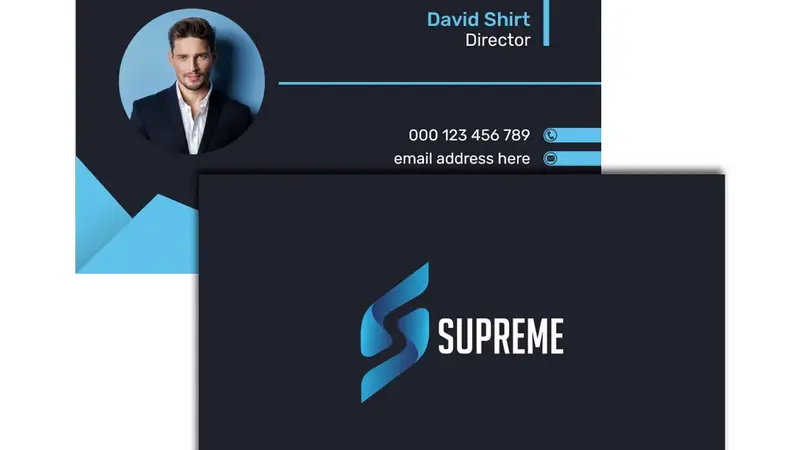Personalized Business Cards: A Guide to Crafting Unique Connections
January 1, 2025

In today’s fast-paced world, networking and leaving a memorable impression are crucial for success. Personalized business cards serve as powerful tools in building professional relationships, showcasing your identity, and communicating your brand in a tangible, meaningful way. This article dives into the art and importance of personalized business cards, offering insights into design, customization, and usage for maximum impact.
What Are Personalized Business Cards?
Personalized business cards are customized versions of traditional business cards designed to reflect your individual or brand identity. Unlike generic business cards, these cards incorporate unique elements such as custom logos, brand colors, creative layouts, and sometimes even innovative materials or interactive features.
Why Personalization Matters
In a sea of standard cards, a personalized business card helps you stand out. It communicates your personality, creativity, and attention to detail while making a lasting impression on recipients. Whether you’re an entrepreneur, artist, or corporate professional, a customized business card adds a touch of professionalism and authenticity.
Benefits of Personalized Business Cards
1. Memorable Branding
A well-designed personalized card ensures your name and brand stay etched in the memory of the recipient. The unique design sets you apart from competitors.
2. Professional Representation
Personalized cards show that you care about your brand’s presentation, reflecting professionalism and effort.
3. Enhanced Networking Opportunities
A creatively designed card is a conversation starter and a reminder of your interaction, encouraging follow-ups.
4. Creative Freedom
Personalization offers endless possibilities for innovation, allowing you to align your card’s design with your professional goals and audience preferences.
Key Elements of Personalized Business Cards
1. Design and Layout
- Simplicity with a Purpose: While creativity is essential, ensure your card is not overly cluttered. Strike a balance between aesthetic appeal and functionality.
- Consistency: Your business card should align with your branding, including logo, fonts, and colors.
2. Material and Finish
- Paper Types: Choose premium paper for a professional feel or opt for textured finishes for a unique touch.
- Innovative Materials: Explore unconventional options like metal, wood, or even eco-friendly materials.
3. Personal Touches
- Incorporate elements like handwritten notes, QR codes linked to your portfolio, or embossed logos to make your card stand out.
How to Design Personalized Business Cards
1. Understand Your Audience
Consider the expectations and preferences of your target audience. For example:
- Creative Industries: Bold colors and unconventional shapes.
- Corporate Sectors: Clean, minimalistic designs.
2. Choose the Right Software or Platform
Platforms like Canva, Adobe Illustrator, and Vistaprint offer customizable templates for designing your cards. They’re user-friendly and cater to both beginners and professionals.
3. Focus on Typography
Choose fonts that are legible and align with your brand identity. Avoid overloading the card with too many font styles.
4. Add Relevant Information
Include essential details such as:
- Name
- Job Title
- Contact Information (phone, email, website)
- Social Media Handles (if relevant)
5. Review and Test
Before finalizing the design, print a sample to ensure colors, fonts, and layouts look as intended.
Trends in Personalized Business Cards
1. Interactive Features
- QR Codes: Direct recipients to your website, portfolio, or LinkedIn profile.
- Augmented Reality (AR): Some cards use AR technology to bring digital elements to life.
2. Eco-Friendly Designs
As sustainability becomes a priority, many professionals opt for recycled materials and biodegradable options.
3. Minimalism
Clean designs with ample white space and simple typography are increasingly popular.
4. Unique Shapes and Sizes
Circular, square, or die-cut cards provide a creative twist on traditional rectangular cards.
Common Mistakes to Avoid
- Overcrowded Design: Avoid cramming too much information or imagery onto your card.
- Low-Quality Materials: Cheap materials can diminish the overall impact.
- Unclear Contact Information: Ensure all details are accurate and legible.
- Ignoring Branding: Failing to align the card with your overall branding may confuse recipients.
Where to Get Personalized Business Cards
1. Online Printing Services
Platforms like Moo, Vistaprint, and Zazzle offer extensive customization options with quick delivery times.
2. Local Printers
Collaborate with local printing companies to discuss bespoke options and sample materials in person.
3. DIY Options
If you’re creatively inclined, consider designing and printing cards yourself using high-quality cardstock and printers.
Tips for Distributing Business Cards
- Networking Events: Hand out cards at conferences, trade shows, or meetups.
- Follow-Ups: Include a business card when sending thank-you notes or promotional materials.
- Strategic Placement: Leave cards at reception areas or partner establishments for greater reach.
Conclusion
Personalized business cards are more than just a way to share contact details—they’re a reflection of your personal and professional identity. By investing in a design that captures your essence and aligns with your branding, you can create meaningful connections and leave a lasting impression. Whether you opt for minimalism, vibrant creativity, or innovative materials, the possibilities for customization are endless.